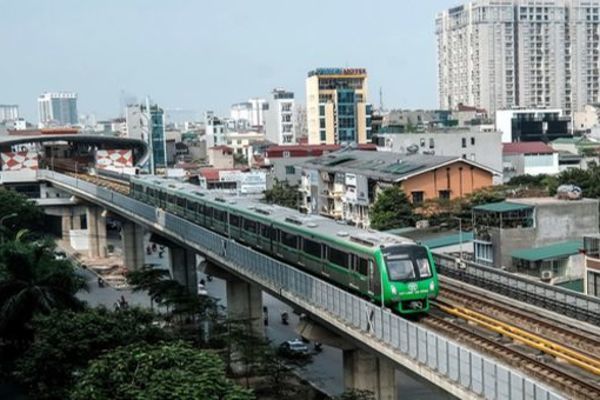 |
| Vietnam will receive the first locomotive for dynamic tests in July. — VNA/VNS Photo |
The first locomotive of the 10 trains with a capacity of 950 passengers each manufactured in France by Alstom Company will be sent to Vietnam in July for tests in September and trial runs in March 2021.
The Hanoi Metropolitan Railway Management Board is making plans to recruit and train workers for the line’s operation and maintenance.
“Trains will run first on the elevated section spanning 8.5km connecting Nhon area and Cau Giay District in April 2021,” the board announced.
The remaining 4km underground line is set to be finished in December 2022.
Hanoi People’s Committee has adjusted the project’s execution time and investment structure.
The metro line was previously planned to be built from September 2010 to September 2017. With the adjustment, it will be implemented from 2009 to 2022 with trains launched in December 2022.
Of 1.17 billion euro invested into the project, Hanoi has reduced a portion allocated from French Development Agency (AFD) from 178.7 million euro to 158.7 million euro and increased a loan from the French government from 335.4 million euro to 355.1 million euro.
The trains are expected to be operated at 35km per hour on average and 80km per hour maximum, the same speed as metros in Paris, Berlin and other cities in Asia.
The trains' colours – coral and yellow – are inspired by Vietnam’s dragon fruit and paddy fields.
The metro line will run through districts of Bac Tu Liem, Nam Tu Liem, Cau Giay, Ba Dinh, Dong Da and Hoan Kiem. — VNS

Nhon – Hanoi Station metro line expected to run in 2021
Once ready, the Nhon – Hanoi Station metro line is expected to serve more than 23,000 passengers per hour from 2021.

Vietnam's Transport Ministry seeks to develop new metro lines
The Ministry of Transport plans to develop 16 new metro line projects in HCMC and Hanoi, though the existing five projects are facing cost overruns and slow execution.
 A metro project connecting Nhon area in Bac Tu Liem District and Hanoi Railway Station is set to have initial dynamic tests from September.
A metro project connecting Nhon area in Bac Tu Liem District and Hanoi Railway Station is set to have initial dynamic tests from September.